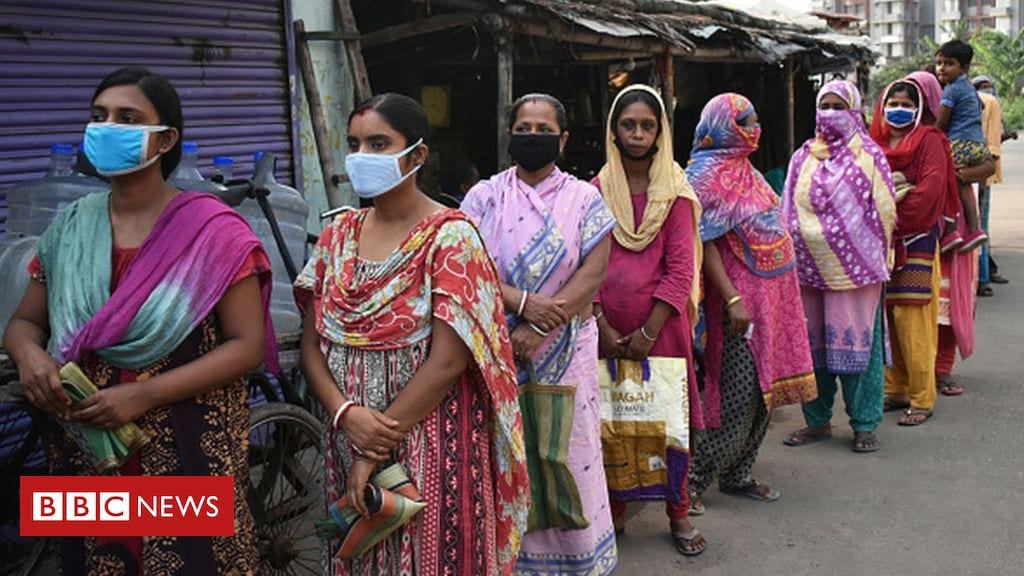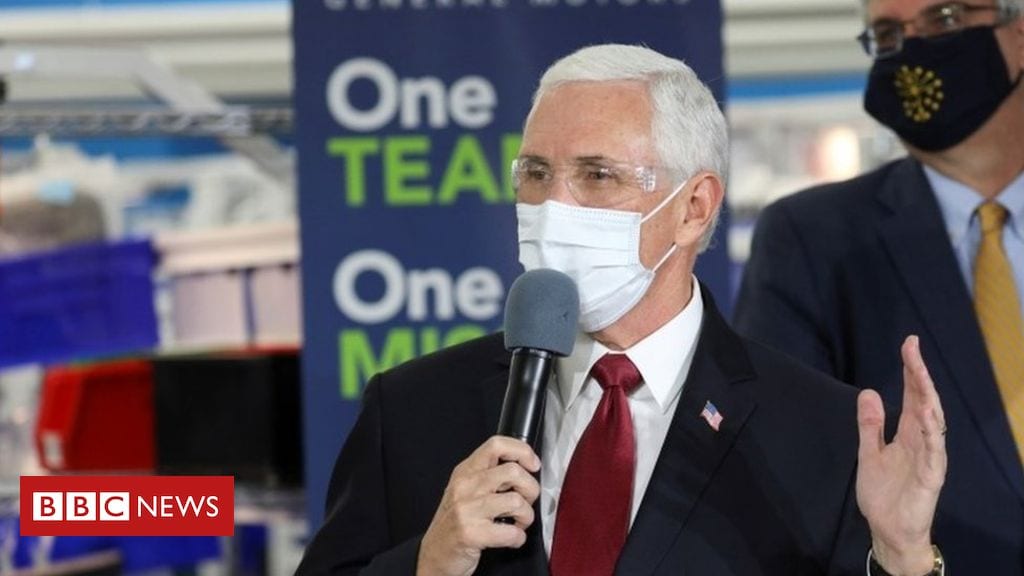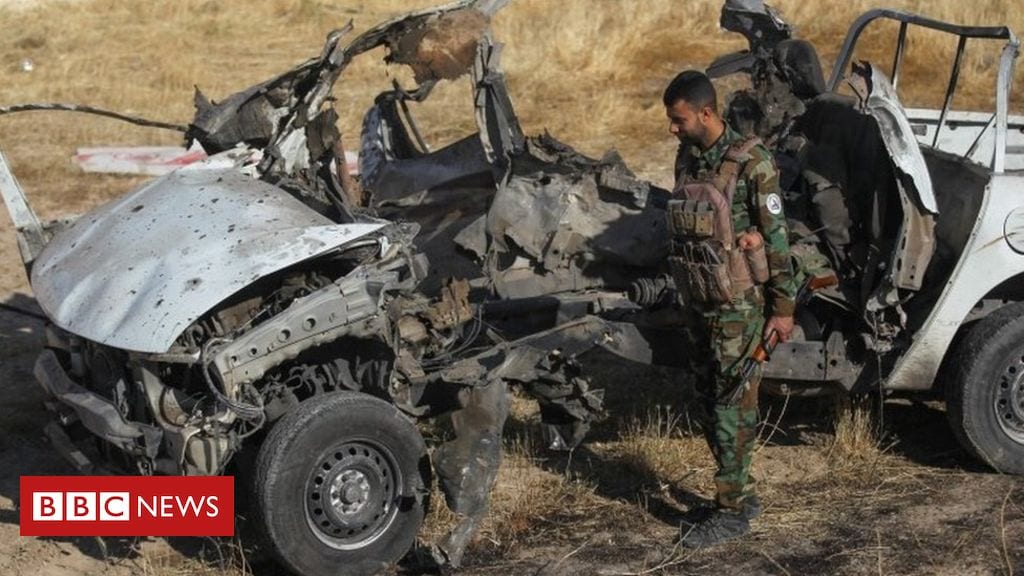[ad_1]
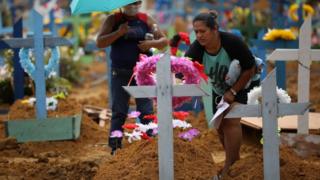
Image copyright
Reuters
Coronavirus has overwhelmed the city of Manaus, where people are being buried in mass graves
In the middle of the rainforest, the virus has taken hold. Manaus, the Amazon’s biggest city, is at breaking point. They are digging mass graves, or trenches. It is the only way overwhelmed authorities can cope with the deaths from Covid-19.
People are asking whether this city, the capital of the Brazilian state of Amazonas, will become the next Guayaquil. It is hard not to compare the two, as the images of unburied bodies in Ecuador are still etched on many peoples’ minds here.
Amazonas has one of Brazil’s highest infection rates and also one of the most underfunded health systems, a combination that has brought chaos to the heart of the jungle.
In April, Manaus saw a rise of 578% in the number of people who died from respiratory problems. They are not officially noted as victims of Covid-19 but experts believe there can only be one explanation. With testing still low, there is a massive underreporting of the real numbers.
But even the official figures – about 92,000 confirmed cases and more than 6,500 deaths – saw Brazil reach a grim milestone as it passed China where the outbreak started.
“We don’t want miracles,” said the mayor of Manaus, Arthur Virgilio Neto. It was a dig at President Jair Bolsonaro, who mocked the rising numbers of deaths by joking that his middle name was Messiah but he did not work miracles.
“What we need is a plane full of scanners, ventilators, medicines and PPE,” he said, referring to protective equipment for health workers. But help has been slow, while Mr Bolsonaro continues to downplay the severity of the virus.
Feeling of abandonment
Home to nearly two million people, Manaus is the seventh-biggest city in Brazil and its most isolated urban centre. Amazonas also has the largest number of indigenous in the country, many of whom now live in the city.
Poverty, malnutrition and displacement make tackling the virus an even bigger challenge for these communities, some of Brazil’s most vulnerable.
In Parque das Tribos, on the outskirts of Manaus, several women are busy at sewing machines. History has taught people that viruses from outside bring devastation. Their only defence now are home-made masks, but much more is needed to protect them.
Home-made face masks protect the women against the virus
“We already have lots of people in the community with symptoms,” says resident Vanderleia dos Santos. “We don’t have a doctor here, or a nurse to look after us.”
During the coronavirus crisis, she says, indigenous communities in the city are being attended to by the public health system, known as SUS. Rural indigenous communities have their own special health service, the Special Secretariat for Indigenous Health (Sesai).
She worries though that the system masks the true numbers of indigenous suffering from Covid-19. She says indigenous are not being registered as such, instead they are put down as “white”.
“Our identity is being questioned all the time,” she says. “And it means we can’t map the relatives who could be infected.”
“We already have lots of people with symptoms,” says Vanderleia dos Santos
With nearly half of Brazil’s indigenous communities now in cities, it is not a small problem.
“The indigenous in urban areas feel abandoned,” says Sonia Guajajara, who heads up the Association of Brazil’s Indigenous People. “They’re exposed to contagion and death because they’re not being attended to straight away.”
‘Double whammy’
For those living deep in the rainforest, the closest medical help is often days away by boat. Some communities have shut themselves away, fearful of contagion. Others remain uncontacted, but their livelihoods are at threat when there is also less oversight from indigenous and environmental agencies.
“It’s a double whammy,” says Jonathan Mazower of Survival International. “Many of the field agents who would have been working to protect reserves from invasions have pulled back and are not patrolling anymore.”
Image copyright
AFP
Amazonas has one of Brazil’s highest coronavirus infection rates
That has huge consequences in a country where illegal loggers and miners have been emboldened by a government set on getting rid of protected areas and developing the Amazon.
“Many people are eyeing up these lands,” Mr Mazower says. “Undoubtedly they’re taking advantage and staking their claim.”
The figures speak for themselves. In the first three months of the year, deforestation rose 51%.
“At the same time as adopting measures to combat Covid-19, we can’t forget the incursions and attacks that keep happening and are never resolved,” says Sonia Guajajara. “Looking out for Covid-19 makes the other issues invisible.”
Image copyright
Reuters
Part of the Amazon that was burned by loggers and farmers in the neighbouring state of Acre
She says illegal miners, loggers, hunters and evangelicals wanting contact with uncontacted tribes “aren’t in quarantine”, adding: “They are using this time to explore and they are the principal vectors.”
And there is an added urgency as fire season begins.
Last year an unprecedented number of fires devastated huge swathes of forest in the Amazon. Peak fire season is from July which some experts worry could coincide with the peak of the coronavirus crisis.
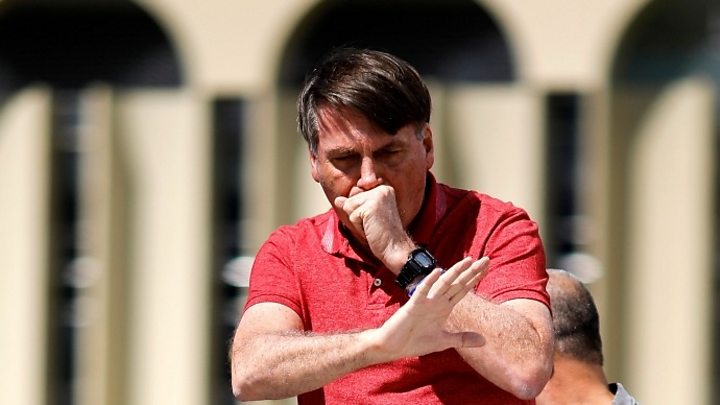
Media playback is unsupported on your device
“This will be double-trouble,” says Romulo Batista of Greenpeace in Manaus.
In 2019, there were more than two and a half times the number of people with lung problems than usual, he said. And municipalities closer to the fire areas, like Porto Velho in the state of Rondônia, will suffer the most.
“When you have a lot of fires, you have a lot of people going to hospital and when you have a hospital full of Covid-19, it will be madness when the fires start this year.”



